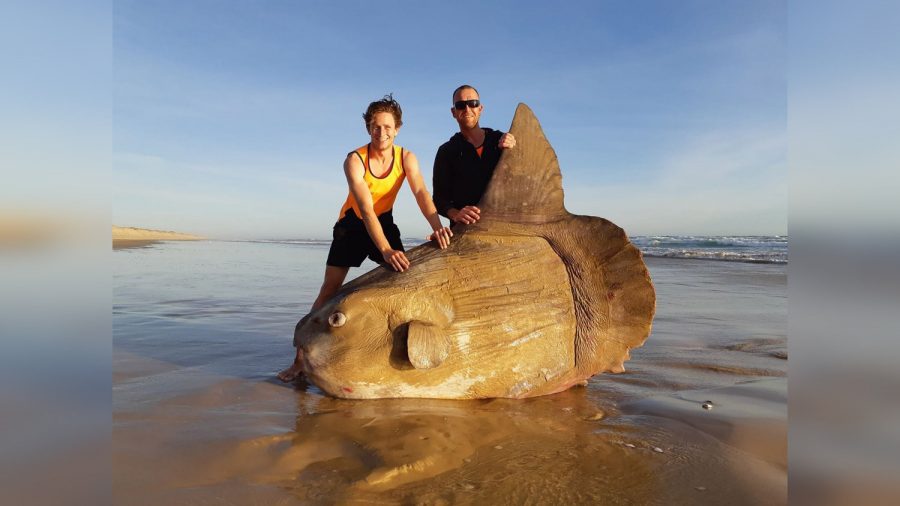A rare, giant fish that weighs more than the average car washed ashore recently in Australia.
The ocean sunfish, or the Mola Mola, was spotted at Coorong National Park by fishermen Steven Jones and Hunter Church.
“He thought it was a piece of driftwood as they were driving past on the work truck,” Jones’ partner Linette Grzelak, who posted the photos of the fish on Facebook, told CNN. “None of them had seen anything like this before.”
Photos show the fisherman posing next to the fish. The different pictures captured various angles showing how huge the fish was and displaying different parts of its body.
“They find all sorts of sea life along the beaches they dig but it has been mostly sharks and seals. This was something very different,” Grzelak added.
“Steven said it was extremely heavy and its skin was leathery like a rhinoceros.”
South Australian Museum fish collection manager Ralph Foster said the fish “is known for its large size, odd flattened body shape, and fins.”
The species is named sunfish because they like basking in the sun, he noted. While doing so, the fish can be hit by boats.
“Researchers have been putting satellite tags and data loggers on these fish and found they will come to the surface and lay on their side on the surface, hence the name the sunfish,” Foster told CNN in an email. “Once they are warm enough they dive down several hundreds of meters and feed on jellyfish and stay down there for lengthy periods of time.”
“We know very little about them. It’s only in the last few years that technology has allowed us to start learning about them,” Foster added.
Their preference for jellyfish can also be dangerous, Foster told the Daily Mail.
“One of the big dangers would being hit by big boats at sea,” he said. “They often eat plastic bags thinking they are jellyfish which can kill them.”
The South Australian Museum said in a Facebook post that there are three species of Mola sunfish and all are found in the waters around southern Australia. The Ocean sunfish is the best-known species and was discovered and named in 2017.
The species are very mobile and move around frequently, the museum said. The sunfish feed largely on jellyfish.
“The ocean sunfish, Mola mola, is a curious fish that left the reef for the open sea millions of years ago and are now found in all major oceans. Somewhere during this long evolutionary history, the mola lost its tail. This does not seem to slow the fish down too much; smaller animals have been seen leaping out of the water,” according to the National Oceanic Atmospheric Administration.
“Not having a tail does not hinder their foraging either. Individuals feed primarily on gelatenous zooplankton which themselves are not strong swimmers. Somewhat surprisingly, even on a diet of jellies, mola grow larger than any other bony fish in the sea, reaching 4,850 pounds (2200 kg) in size. Large adults are most commonly encountered basking on the surface, often near kelp patties. Smaller molas are seen in relatively large schools as in the video. While there are a few locations where mola are targeted for the dinner plate (mainly Asia), their main interaction with fisheries is as bycatch.”

